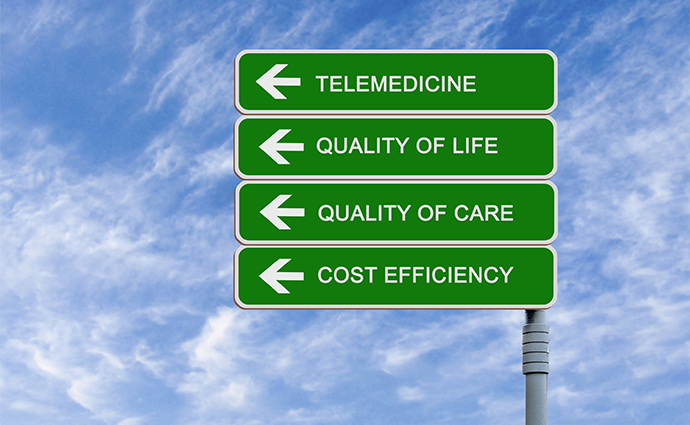MUSC, FQHC Consortium Unveil Telehealth Strategies for Sustainability
The Medical University of South Carolina and Massachusetts-based FQHC Telehealth Consortium have outlined their telehealth strategies in reports designed to help others establish scalable and sustainable programs.

Source: ThinkStock
- As health systems develop their own telehealth strategies to weather the COVID-19 storm, they’re putting that knowledge down on paper – virtually – to help other providers looking to travel down that road.
Staff at the Medical University of South Carolina, for example, have created a Telehealth Service Implementation Model (TSIM), offering an inside look into how one of the nation’s two National Telehealth Centers of Excellence developed its platform of more than 80 connected health services reaching almost 275 sites across the state.
“TSIM organizes all of the steps involved in developing a telehealth program,” Dee Ford, MD, MUSC’s program director for the National Telehealth Center of Excellence and the report’s senior author, said in a press release. “It is strategy driven and provides workflows for the clinical, administrative, regulatory and technology components of telehealth. TSIM doesn’t stop there, though; it continues into telehealth application and quality assessment.”
“Telehealth brings the expertise of health care providers together to develop clinical services provided via technology,” added Shawn Valenta, the center’s former administrator and a co-creator of the TSIM, in the release. “Navigating legal and regulatory barriers, as well as issues related to data, finance and technology, all create development and implementation challenges.”
The pandemic saw a triple-digit surge in telehealth adoption across the country, prompting health systems to not only expand what they had going in telehealth and mHealth services but add new platforms. Many providers, from hospitals down to small practices and clinics, launched programs for the first time, bolstered by emergency federal and state measures that allowed them to try out the technology and get some reimbursement.
READ MORE: Avera Health Sells Off its eCare Telehealth Business
But as the pandemic wanes and the regulations around telehealth change, providers are wondering whether to keep up the momentum and look for sustainability or simply go back to the old way of doing things.
“There is a lot of investment in digital health technology, which is great, but an investment in how to use these technologies effectively – which is essentially TSIM – will endure even when technologies change,” Valenta said.
Up the coast in Massachusetts, a consortium of federally qualified health centers has published a Telehealth Playbook, aimed at helping FQHCs, community health centers and primary care providers adopt sustainable connected health services.
“What makes this playbook different is that it’s proven: all of the resources and best practices that it outlines have been effectively used by primary care practices with a framework of team-based, patient-centered care,” Christina Severin, president and CEO of the Community Care Cooperative(C3), which formed the FQHC Telehealth Consortium in a partnership with the Massachusetts League of Community Health Centers, said in a press release. “The Telehealth Playbook comes from a deeply held belief that technology should serve all patients, and must be used to increase access and diminish the disparities that are too often seen in our BIPOC and low-income communities.”
“We designed the Playbook to increase the capabilities that health centers and other providers need to advance their telehealth performance,” added Michael Curry, president and CEO of the Massachusetts League of Community Health Centers. “The Playbook, which comes directly from the learnings of health centers and with no commercial bias, offers resources in areas like compliance, HR and policy – all of which are tailored to meet the needs of partners not only in Massachusetts, but nationally.”
FQHCs, rural health centers (RHCs) and other community health centers have been on the front lines of providing care during the pandemic for underserved communities. The FQHC Telehealth Consortium, in fact, recently announced that its 35 health centers have conducted more than 1 million telehealth visits since March of 2020.
Many see that growth continuing.
“While telehealth played an essential role in maintaining continuity of care throughout the pandemic, our health centers see its continued popularity among low-income communities and communities of color, even as in-person visits are now available,” Severin said. “As we pass 1 million telemedicine visits, the numbers validate what we’ve seen: telehealth provides opportunities for increased access to care and diminishes health inequities faced by Medicaid patients as a result of institutionalized racism in our health care system. We thank our donors who are supporting our efforts in addressing this injustice.”
The TSIM and Telehealth Playbook add to the growing library of telehealth resources available to healthcare providers and other organizations - including the National Consortium of Telehealth Resource Centers, a nationwide network of 12 regional and two national centers.
